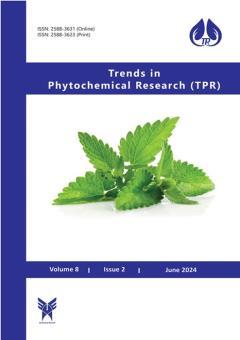-
-
-
Open Access Article
1 - A comparative study on the extracts from the fruits of Ficus auriculata L.: GC-MS profiling, phytochemical composition, biological activities and in-silico ADMET study
Garima Tamta Nisha Mehra Shishir Tandon Viveka Nand Manish Pant Vinita Gouri -
Open Access Article
2 - Biological activities of protocorms and stems extracts of Dendrobium transparens
Pusp Raj Joshi Bir Bahadur Thapa Krishna Chand Lasta Maharjan Mukti Ram Paudel Basant Pant Bijaya Pant
List of Articles Manish Pant
-
The rights to this website are owned by the Raimag Press Management System.
Copyright © 2021-2024


